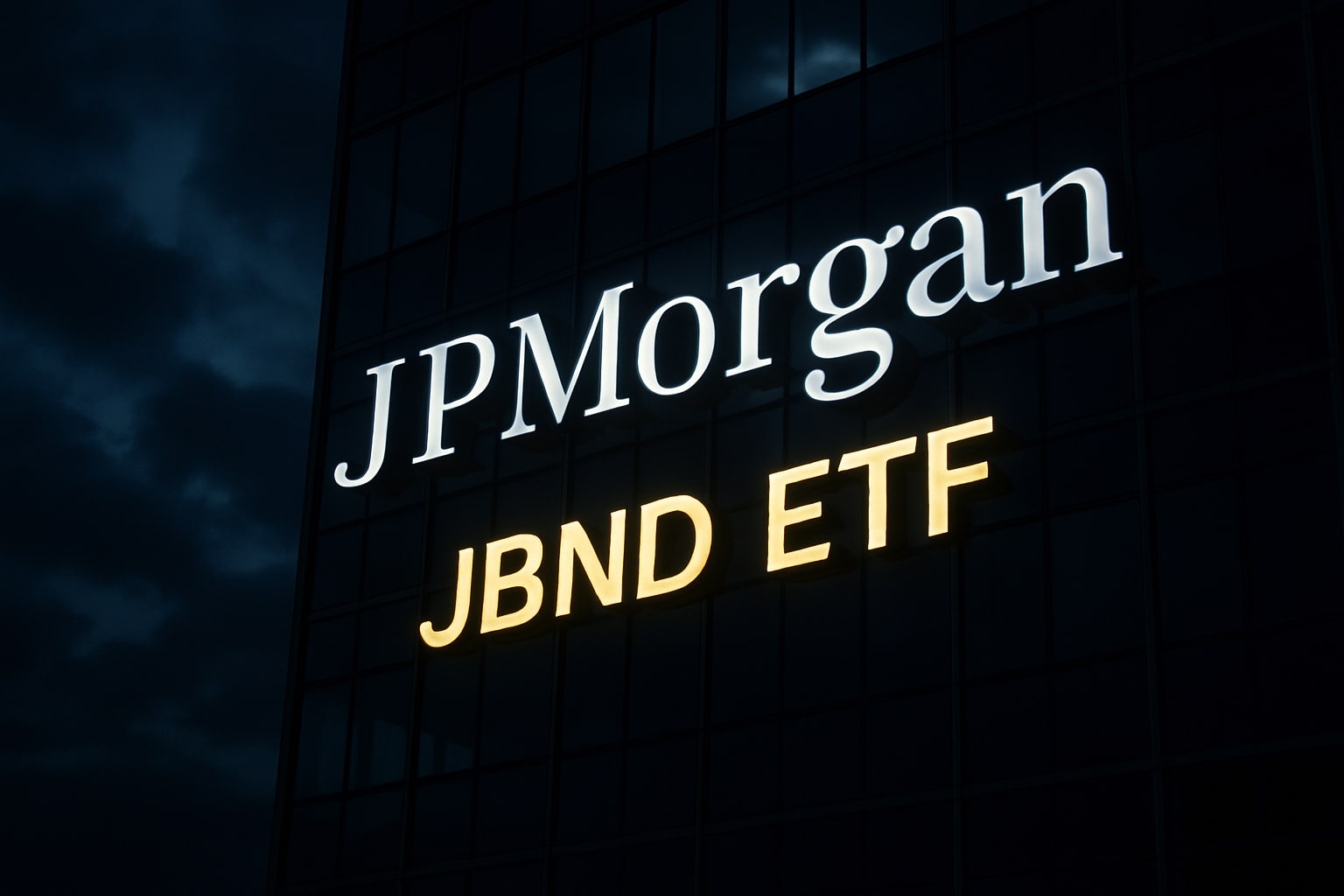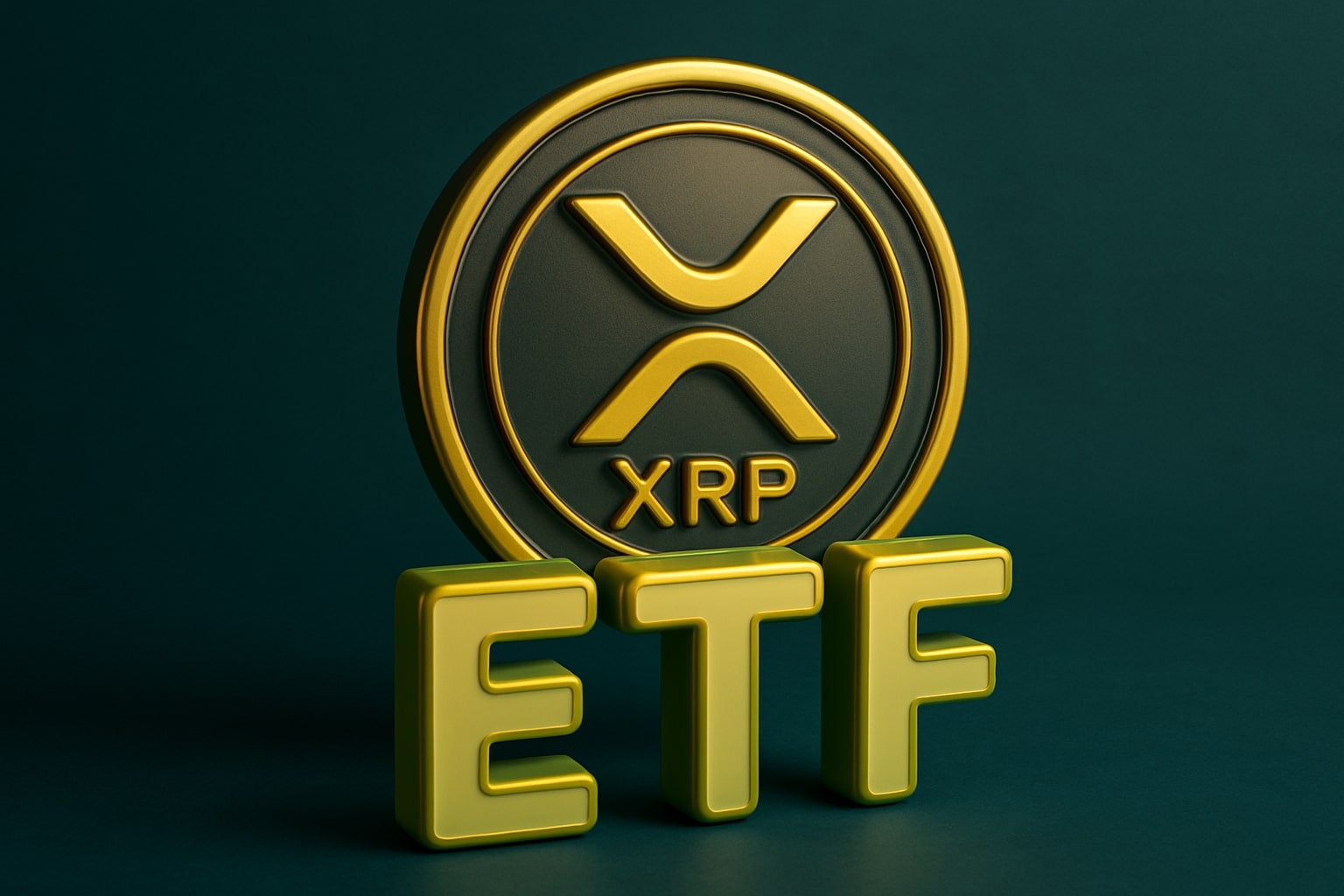
JBND ETF Stabilizes Near $54.16 as Cooling Real Yields and Firm Credit Spreads Fuel a Stronger Outlook
The JPMorgan Active Bond ETF strengthens its position with a 4.38% yield, steady MBS performance, and a disciplined 6.25-year duration strategy as macro conditions tilt in its favor | That's TradingNEWS
Macro Forces Shaping NYSE:JBND’s Positioning At $54.16
NYSE:JBND trades near $54.16, holding tight to a $54.15–$54.73 intraday range and staying just below the $54.87 yearly peak. The way the ETF behaves reflects an environment where real yields have finally stopped climbing. The 10-year inflation-adjusted benchmark rolled off its local highs and eased into a steadier zone, removing pressure from intermediate-duration bonds. Breakeven inflation continues to sit inside its band without slipping, which protects JBND’s purchasing power from inflation erosion. The employment cycle remains solid, with the 13-week change in jobless claims showing no deterioration big enough to widen risk premia. A market that is no longer pricing aggressive tightening and not yet pricing recession gives JBND the exact setup it benefits from: calm rates, contained credit spreads and predictable carry.
Portfolio Structure Inside NYSE:JBND’s Active Engine
The internal composition of NYSE:JBND reflects deliberate design rather than passive mirroring. The ETF allocates close to 40% into Treasuries, a heavy dose of agency MBS, and a diversified sleeve of investment-grade corporates. It holds a slightly larger BBB allocation versus AGG and an 8% overweight in commercial MBS, which becomes meaningful when spreads are stable. With an effective duration around 6.25 years, the fund positions itself squarely in the intermediate curve—long enough to benefit if yields soften, short enough to avoid the violent volatility seen in long duration funds. Monthly income comes through a 4.38% yield, driven by its $2.38 distribution rate. The managers are using this mix for carry extraction rather than speculative swings, adapting exposures as MBS prepayment incentives shift or credit spreads adjust.
Credit Behavior, Liquidity Trends and MBS Dynamics That Shape JBND’s Returns
The performance pattern of JBND aligns directly with the credit and liquidity backdrop. Investment-grade spreads remain tight, signaling that the market isn’t demanding extra compensation for corporate risk. High-yield spreads may have inched wider, but not enough to flip the risk-reward balance away from quality. The financial conditions index remains loose enough for mortgage markets to function without abnormal stress, and the Federal Reserve’s balance sheet indicators, including WALCL movements, show no recent liquidity shocks. The MBS sleeve inside JBND depends heavily on refinancing patterns, and with 30-year mortgage rates moving in a controlled fashion rather than collapsing, prepayment risk remains manageable. None of the major indicators are flashing the kind of turbulence that damages intermediate bond funds, which is why JBND’s performance remains resilient.
Yield Strength, Volatility Profile and JBND’s Edge Over AGG
JBND’s 4.4% dividend yield sits above its benchmark while being supported by a portfolio dominated by Treasuries and agency MBS, an unusual combination of safety and payout. Despite slightly more BBB risk and slightly more duration than AGG, the ETF consistently delivers lower realized volatility, gentler drawdowns and stronger risk-adjusted returns. The Sharpe and Sortino ratios outperform the benchmark, a sign that active management is adding value rather than drifting. A high 89% turnover confirms that the team is tactically shifting exposures rather than hugging the index. JBND’s historical performance since inception shows that these incremental advantages compound. Even in the tough 2022–2023 rate cycle, the fund preserved stability better than its peers and resumed upward momentum when yields cooled.
Interest Rate Path, Yield Curve Signals and What They Mean for NYSE:JBND
The direction JBND takes from here depends on the long-term path of U.S. yields. With real yields easing, inflation expectations stable and labor markets not deteriorating, the macro landscape favors intermediate duration. If long yields drift lower, JBND’s NAV rises. If yields move sideways, the 4.38% carry dominates. Even if rates push slightly higher, the intermediate positioning shields the portfolio from the heavy losses seen in long-duration strategies. The curve’s 10s-2s behavior remains a key driver; normalization on the long end typically benefits funds positioned exactly where JBND operates. All available macro signals indicate that the ETF is sitting in the optimal duration band for the current cycle.
Read More
-
Reddit Stock Price Forecast - RDDT Drops to $190 Despite Explosive Growth — What Unlocks the Next Rally?
13.11.2025 · TradingNEWS ArchiveStocks
-
XRPC ETF Roars Out of the Gate With $26M as XRPI at $13.51 and XRPR at $18.98 Lead a New XRP ETF Market Cycle
13.11.2025 · TradingNEWS ArchiveCrypto
-
Natural Gas Price Surges Toward Multi-Year Highs as $4.60 Breakout Collides With Winter Demand
13.11.2025 · TradingNEWS ArchiveCommodities
-
Stock Market Today - Nasdaq 22,959 Crashes as Tech Unravels— DIS Stock –8.8% & NVDA Stock –4% Hit Markets Hard
13.11.2025 · TradingNEWS ArchiveMarkets
-
USD/JPY Price Forecast - Yen Surges Toward 155.00 as BoJ Uncertainty and U.S. Data Backlog Ignite a High-Risk Breakout
13.11.2025 · TradingNEWS ArchiveForex
Final Verdict On NYSE:JBND Based On Full Data Integration
NYSE:JBND (JPMorgan Active Bond ETF)
Real-time chart: https://www.tradingnews.com/Stocks/JBND/real_time_chart
After integrating every macro variable, credit dynamic, yield metric, duration factor, spread indicator and performance profile from the provided data, the positioning becomes clear. JBND offers a rare combination of monthly income, durable carry, active management that actually enhances stability and a portfolio aligned with an environment of cooling real yields and anchored inflation. The ETF’s tight trading band around $54.16, its proximity to the yearly high and its strong relative behavior against AGG show an instrument benefiting from both macro conditions and manager execution. The evidence supports a decisive conclusion: JBND is a BUY, driven by carry, protected by quality, and positioned to benefit from a stabilizing rates cycle without assuming excessive risk.



















